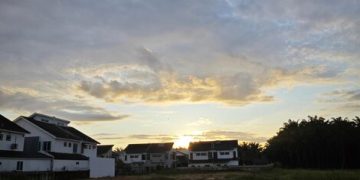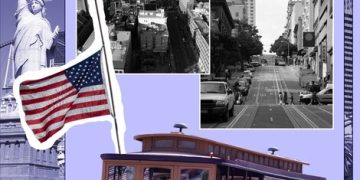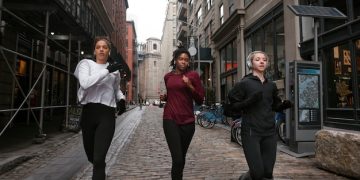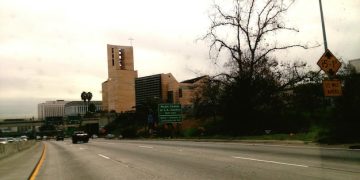Aging US Population: Reshaping the Economy in the Next Decade

How the aging US population will reshape the economy in the next decade involves shifts in healthcare demand, labor force participation, housing preferences, and government spending, creating both opportunities and challenges for various sectors.
The United States is experiencing a significant demographic shift: an aging population. How the aging US population will reshape the economy in the next decade is a question that warrants serious consideration, as its impacts will be far-reaching, affecting everything from healthcare and housing to the labor market and social security.
Demographic Trends: The Graying of America
The aging of the US population is not a future projection; it’s a present reality. Understanding the underlying demographic trends is crucial for anticipating the economic changes to come.
Several factors contribute to this demographic shift. Increased life expectancy due to advances in healthcare, combined with lower birth rates, is creating a larger proportion of older individuals in the population.
Key Demographic Indicators
Let’s examine some key indicators that highlight the extent of this demographic transformation:
- Median Age: The median age in the US has been steadily increasing, indicating an overall older population.
- Dependency Ratio: The dependency ratio, which measures the number of dependents (under 15 and over 64) per 100 working-age individuals, is rising, putting pressure on social support systems.
- Growth of the 65+ Population: The population aged 65 and over is growing at a faster rate than the overall population, signaling a significant shift in age demographics.
These demographic trends are not uniform across the US, some states are aging more rapidly than others, influenced by factors like migration patterns and regional birth rates.
In conclusion, the aging of the US population is a multifaceted phenomenon driven by increased longevity and declining birth rates. These trends are not just statistics; they represent a profound shift in the demographic landscape, influencing everything from healthcare needs to labor market dynamics. Recognizing these trends is the first step in understanding and preparing for the economic challenges and opportunities that lie ahead.
Healthcare and the Silver Tsunami
As the population ages, the demand for healthcare services inevitably increases. The healthcare system needs to adapt to meet the unique needs of an older demographic.
The “silver tsunami” refers to the surge in healthcare demand driven by the aging population. Older adults typically require more frequent and specialized medical care, leading to increased strain on existing healthcare resources.

Rising Healthcare Costs
The increased demand for healthcare services translates to rising healthcare costs. This poses a challenge for individuals, families, and the government.
- Medicare Spending: Medicare, the federal health insurance program for seniors, is facing increasing financial pressure due to the growing number of beneficiaries and rising healthcare costs.
- Long-Term Care: The need for long-term care services, such as nursing homes and assisted living facilities, is also increasing, adding to the financial burden on families.
- Technological Advancements: While technological advancements in healthcare can improve the quality of care for older adults, they also contribute to rising costs.
The healthcare industry is exploring innovative solutions to address these challenges, telehealth, remote patient monitoring, and preventative care programs are gaining traction as ways to improve access to care while containing costs.
To sum up, the aging of the US population is creating a silver tsunami in healthcare, with increased demand for services, rising costs, and the need for innovative solutions. Addressing these challenges requires a coordinated effort from healthcare providers, policymakers, and individuals to ensure that older adults receive the care they need while containing costs.
The Shifting Labor Force
The aging population is also impacting the labor force, creating both challenges and opportunities for employers and workers.
As more individuals retire, the labor force participation rate – the percentage of the population that is either employed or actively seeking employment – may decline. This can lead to labor shortages in certain sectors.
The Skills Gap
One of the challenges facing the labor force is the skills gap. As older workers retire, their knowledge and expertise may be lost, creating a shortage of skilled workers in certain industries.
- Training and Education: To address the skills gap, investment in training and education programs is crucial. This can help workers acquire the skills needed to fill the jobs vacated by retiring workers.
- Lifelong Learning: Promoting lifelong learning is also essential. Workers need to continuously update their skills to remain competitive in a rapidly changing job market.
- Attracting Younger Workers: Employers need to make their workplaces attractive to younger workers. This includes offering competitive salaries, benefits, and opportunities for advancement.
Many older workers are choosing to remain in the labor force longer, driven by financial need, a desire to stay active, or simply a love of their work. This trend can help offset the decline in labor force participation rates.
The bottom line is that the aging population is reshaping the labor force, creating challenges related to labor shortages and skills gaps. However, it also presents opportunities for older workers to remain in the workforce and for employers to adapt to a changing demographic landscape. Addressing these challenges and embracing these opportunities will be crucial for maintaining a strong and productive economy.
Housing: Adapting to Changing Needs
The housing market is also influenced by the aging population, as older adults have different housing preferences and needs than younger generations.
Many older adults prefer to age in place, remaining in their current homes as long as possible. This requires modifications to make homes more accessible and safe, such as installing grab bars in bathrooms, ramps for wheelchairs, and improved lighting.
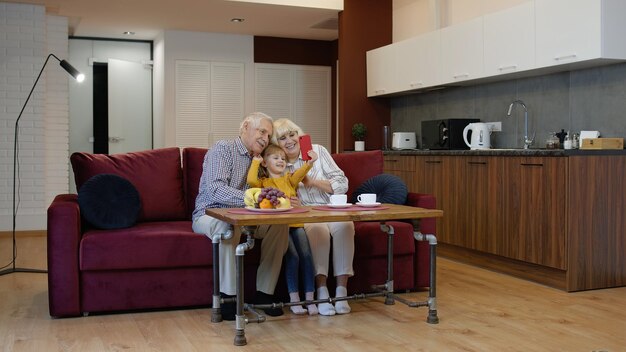
Trends in Senior Living Communities
An increasing number of older adults are opting to move to age-restricted communities or assisted living facilities that offer a range of services and amenities.
- Independent Living: These communities provide housing for older adults who are still able to live independently but want the convenience of having access to services like meals, transportation, and social activities.
- Assisted Living: Assisted living facilities offer housing and personal care services for older adults who need help with activities of daily living, such as bathing, dressing, and medication management.
- Continuing Care Retirement Communities (CCRCs): CCRCs provide a continuum of care, offering independent living, assisted living, and nursing home care all in one location.
The aging population is driving demand for a wider range of housing options that cater to the needs of older adults. Developers and policymakers need to work together to create housing solutions that are affordable, accessible, and meet the evolving needs of the aging population.
In brief, the housing market is adapting to the changing needs of the aging population, with trends towards aging in place, age-restricted communities, and assisted living facilities. Providing a range of housing options that are affordable, accessible, and meet the evolving needs of older adults will be crucial for ensuring their well-being and quality of life.
Social Security and Government Spending
The aging population places significant strain on government programs like Social Security and Medicare, which provide benefits to older adults. This necessitates careful policy adjustments and reforms.
Social Security is a pay-as-you-go system, meaning that current workers’ payroll taxes fund the benefits of current retirees. As the ratio of workers to retirees declines, the system may face financial challenges.
Potential Policy Solutions
Policymakers are exploring various options to address the long-term financial sustainability of Social Security and Medicare.
- Raising the Retirement Age: Gradually increasing the retirement age could reduce the number of beneficiaries and increase the number of workers contributing to the system.
- Adjusting Benefit Formulas: Modifying the formulas used to calculate benefits could help reduce costs while still providing adequate support for retirees.
- Increasing Taxes: Raising payroll taxes or implementing new taxes could generate additional revenue to fund the programs.
Government spending on programs and services for older adults, such as healthcare, housing, and transportation, is likely to increase as the population continues to age. This requires careful budget planning and prioritization.
The central point is that the aging population is placing significant pressure on government programs and spending. Addressing these challenges requires careful policy adjustments and reforms to ensure the long-term sustainability of Social Security and Medicare, as well as responsible budget planning to meet the evolving needs of the aging population.
Opportunities for Innovation and Growth
While the aging population presents challenges, it also creates opportunities for innovation and economic growth. Businesses that cater to the needs of older adults can thrive in this changing landscape.
The “longevity economy” encompasses the goods and services that cater to the needs and preferences of older adults. This includes healthcare, housing, financial services, transportation, and leisure activities.
Areas of Growth
Several sectors are poised for growth in the longevity economy.
- Assistive Technology: The demand for assistive technology, such as hearing aids, mobility devices, and smart home devices, is likely to increase as the population ages.
- Senior-Friendly Products and Services: Businesses that design products and services specifically for older adults, such as easy-to-use smartphones, comfortable clothing, and accessible travel packages, can tap into a growing market.
- Geriatric Care Management: Geriatric care managers provide personalized assistance to older adults and their families, helping them navigate the complexities of healthcare, housing, and other services.
The aging population also presents opportunities for workforce development and retraining programs. As older workers retire, there is a need for skilled workers to fill the jobs they leave behind. Investing in training programs can help workers acquire the skills needed to succeed in the longevity economy.
To summarize, the aging population creates significant opportunities for innovation and economic growth. Businesses that cater to the needs of older adults, as well as workforce development programs that focus on training workers for the longevity economy, can thrive in this evolving landscape.
| Key Point | Brief Description |
|---|---|
| 📈 Demographic Shift | Increased median age and dependency ratio impact social support systems. |
| ⚕️ Healthcare Costs | Rising demand strains Medicare and long-term care, necessitating innovation. |
| 🏢 Housing Adaptations | Demand for accessible homes and senior living communities is growing. |
| 💼 Labor Force Changes | Skills gaps emerge as older workers retire, requiring training investments. |
Frequently Asked Questions
▼
The “silver tsunami” refers to the surge in healthcare demand as the population ages, resulting in higher costs and greater strain on the healthcare system.
▼
As the ratio of workers to retirees declines, Social Security faces financial challenges, potentially requiring policy adjustments for sustainability.
▼
Common trends include aging in place with home modifications, moving to age-restricted communities, and opting for assisted living facilities.
▼
The longevity economy encompasses the goods and services that cater to the needs and preferences of older adults, including healthcare and financial services.
▼
That is the gap that happens when older workers retires and the retirement of knowledge and expertise creates a shortage of workers in specific industries.
Conclusion
The aging of the US population presents both significant challenges and opportunities for the economy. By understanding the demographic trends, addressing the healthcare needs of older adults, adapting the labor force, creating suitable housing options, reforming government programs, and fostering innovation in the longevity economy, the US can navigate these changes and build a more resilient and prosperous future.
